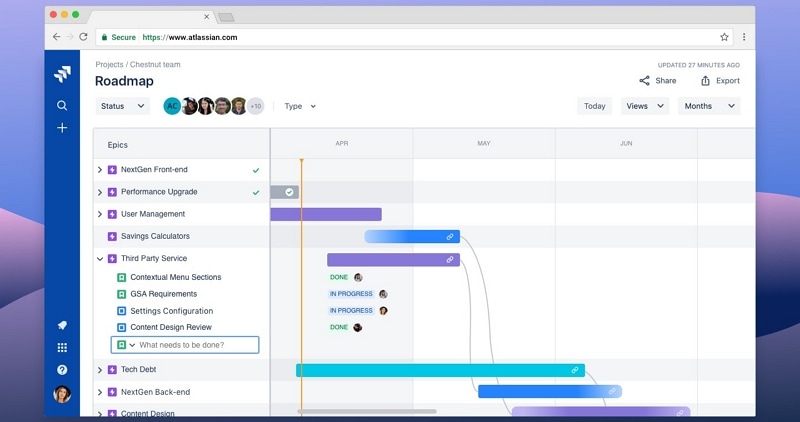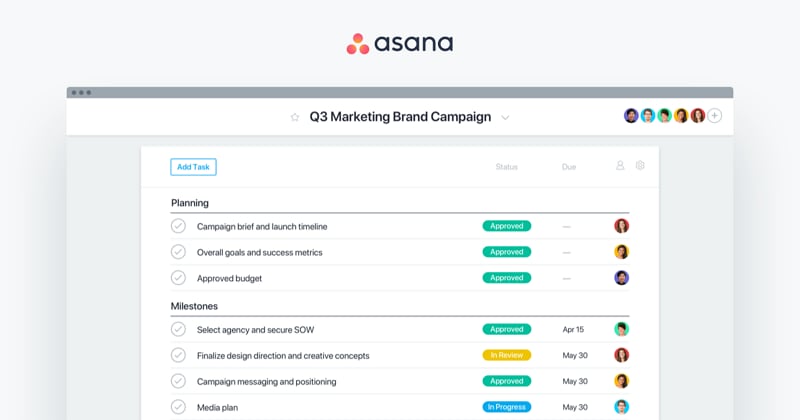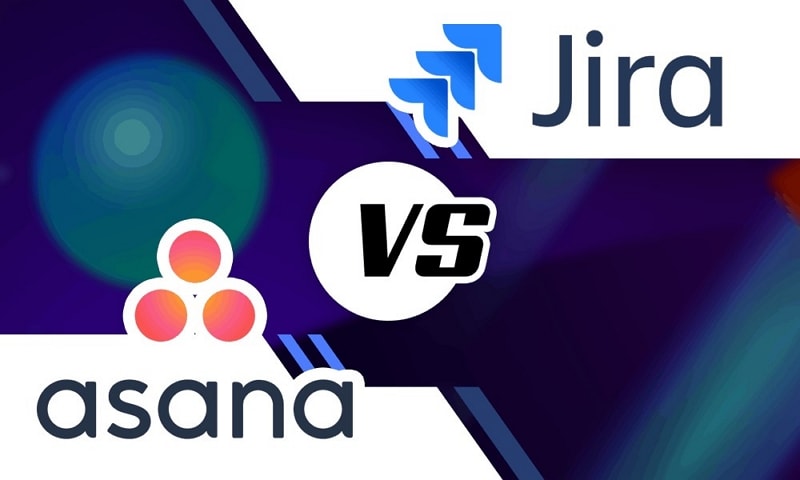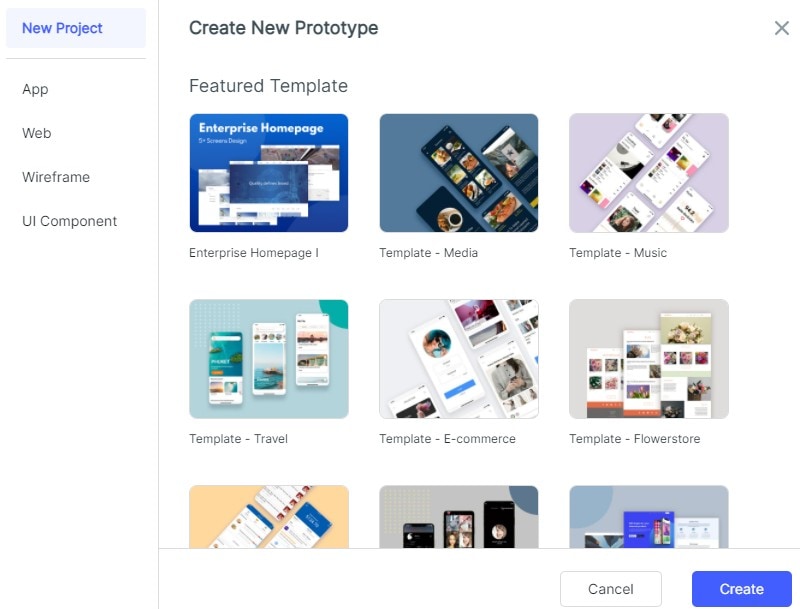Asana VS Jira, Which
UI / UX is becoming an increasingly complex challenge for any company. The appearance of the product also demands more and more uniqueness. Functionality and usability must be top-notch. Market competition has grown significantly. The project management system is widely used by IT companies. Programs provide communication between departments within the company and communication with external contractors.
Therefore, the role of project management has grown significantly, and the approaches to this process have changed. First of all, project management tools have taken on significant importance. A lot of them have appeared on the market. Several services are competing for the first place. One of such steel Asana and Jira.
- Part 1: What is Jira?
- Part 2: What is Asana?
- Part 3: Asana VS Jira: The pros and cons
- Part 4: Useful prototype tool for the product manager
What is Jira?
The JIRA system provides automatic management of any project in a company of any size and monitors disruptions in the project schedule. JIRA customization and special filters allow each employee of the company and managers of all levels to exchange information with each other. A new employee or leader is involved in any stage of the project or in any group, where the task to be performed is recorded and the deadlines are tracked.

Co-authoring files allows a separate team to work in a single file and track the update and progress of each team task. JIRA allows you to view the entire process of work of project developers, identify obstacles to its implementation, identify errors that arise in the use of JIRA by clients, and quickly resolve them.
What is Asana?
Asana is a project management software for organizing and managing teams and various workflows. The Asana service helps to organize the work of the project team within the service, through the use of convenient task lists. Everything unfolds on the built-in desktop. The service allows you to use the API. There are mobile applications. The reviews about the Asana service are very positive.

Asana is easy to learn and offers many of the features an inexperienced user would expect from a service like this. The basic set offers templates for different projects, building task lists, timelines, calendars, and progress statuses. The Asana service takes up a little space, but despite this, the program is useful for both large and small teams dealing with one or several projects. The counterparts of the Asana program cannot win back its adherents because of its functionality and simplicity.
Asana VS Jira: The pros and cons

JIRA
Jira has established itself as the market standard for implementing larger and more complex Scrum projects. It offers the possibility of showing all essential artifacts and events of the Scrum process in digital form. The powerful software was developed to enable Scrum teams to plan, track, and release software or products. In addition, the software offers the possibility of keeping an eye on the progress of the project with the help of real-time reporting. Due to the customization options within the administration, the tool can be adapted to all team and project needs, and thus optimally depicts your project.
Pros:
- Real-time overview of project progress
- Task assignment
- Schedule or project plan overview
- Open collaboration
- Allocation of work packages for team members
- Current reporting functions
- Cooperation across spatial boundaries
- Can also be used via mobile devices
- Can be individualized and expanded, for example using add-ons
Cons:
- With a large number of subtasks, the process of completing a common task can be difficult to perceive.
- Jira is quite difficult to learn, so it won't be easy for a non-techie to figure it out, to put it mildly.
Asana
Asana is one of the most popular project management tools out there. Registering for a test account is very quick: Simply enter your email address, confirm and we will be greeted with a brief check-in in which we will check whether and how we are already organizing work processes. Then we can create a structure that we like: to-do list, Kanban board, or Gantt chart - the choice is up to the user.
Asana Pros:
- Diverse functionality and good detail;
- Tasks can be set on several levels;
- Convenient and beautiful interface;
- The system is suitable for large and small projects;
- The ability to rank tasks by priority;
- The system of commenting and communication with colleagues is very convenient;
- Asana Russian version adds popularity to the program in our country;
- There is a free version and the Asana program can be downloaded for free.
Asana Cons:
- There is no local version of the program;
- The service cannot be purchased, as it is provided only for a monthly rental of $ 8.
| Features | JIRA | Asana |
|---|---|---|
| Platform | It supports any product or software application development. | It supports any projects, mostly small and medium. |
| Changes and Updates | This allows updates and changes to be made at all stages of the project. | This allows for quick changes to tasks and workflows but is not suitable for more small projects, which affects the dashboard. |
| Flexibility | It depends on the methodology used in the project. | It is a flexible tool for integrating with third-party tools. |
| Hosting | Jira cloud-based hosting allows you to host data on your own servers, which makes it possible to run the service locally. | Asana provides exclusively cloud storage. Thus, the project data is stored on the servers of this company. |
| Task management | In Jira created workflow. Several projects can become part of it at once, in which "problems requiring solution" are indicated. The whole process is systematized according to three indicators: sprints, epics, and errors | In Asana, task management is project-based. So, the manager creates a project, adds a team of employees to it, and creates lists of goals. |
| Control | It depends on the project and product configuration. | It's easier to manage and contains a toolbar for easy tracking. |
| Popularity | It is more popular and used by most organizations in the industry. | It is not more popular but is used by a few small and medium-sized companies. |
Useful prototype tool for the product manager
Wondershare Mockitt is a cloud-based, vector-based prototyping tool. It is very similar in functionality to Sketch. It is characterized by flexible features, accessibility, a collaboration between designers and developers, good prices, and prototyping qualities.

Can newbies also use Wondershare Mockitt?
Wondershare Mockitt is relatively easy to understand and it doesn't take much time to familiarize yourself with how it works. Not only for newbies but also for designers who migrate from other prototyping tools, Wondershare Mockitt is relatively easy to learn. At Wondershare Mockitt you can find almost all the items you need on the same page. The icons are understandable and easy to identify. The features are interactive and the design page is simple.
1. Wireframes
Wireframes are visual guides that represent the skeletal framework of web pages and provide a preview of what a website or app will look like. Creating wireframes is usually the first step in the UX process. Wireframes are the blueprints of the final design. Wondershare Mockitt’s wireframing makes working with designs easy and intuitive. They offer wireframe templates and wireframe kits live in the browser to start sketching without the need for additional software. If you use the power of prototyping, you can bring your wireframes to life without having to program.

2. Components
Components are reusable, scalable elements in the design. They are very flexible, easy to use, and help create consistent designs across projects. By allowing designers to create UI libraries and share them with the team, anyone with access to a project can use component instances in their designs and be sure they are working with the latest version.
3. Prototyping
Wondershare Mockitt prototype tools enable designers to create interactive workflows on designs seamlessly. Wondershare Mockitt also enables interactions in conditions such as hovering the mouse pointer, mouse actions, and clicking. The prototypes and any interactions they contain can be distributed to anyone with access for viewing and feedback.
Prototypes are fantastic for:
- View previews of interactions and user flow
- Exchange ideas and iterate
- Get feedback from employees
- Test user interactions
- Present your designs to stakeholders

